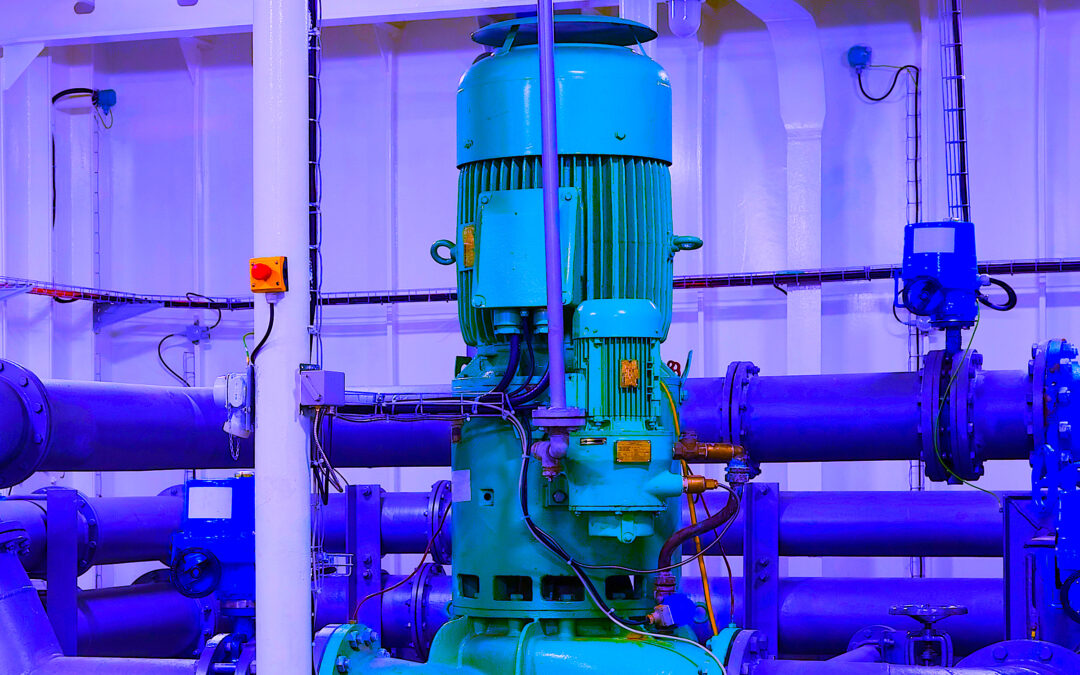Vertical pumps are available in numerous different configurations, and excel in such areas as ease of multi-staging, virtually unlimited installation depth below grade, and small footprint, i.e. not taking up much real estate. If you have to make a mechanical-reliability assessment before releasing your next purchase specification, it might be a good idea to bring it up to 2020 standards.
Consider focusing on the components that experience most failures: the thrust bearing, seal circulation system, and column bearings. Not to be overlooked is an examination of the overall design from the point of view of best available configuration, low-risk-of-failure installation, and preventive maintenance practices. On cryogenic services, you might opt to involve materials specialists in your review of material selection.
ASSESSING THE OVERALL DESIGN
Two areas of overall design are of primary interest. For ease of maintenance, individual column sections should be bolted, not screwed together. Also, impeller attachment by means of tapered collets should be disallowed on high reliability vertical pumps.
Unless we are considering a relatively small size or model, a vertical pump should preferably be equipped with its own oil-lubricated thrust pot instead of depending on the motor thrust bearings to serve the entire assembly. Additionally, we would typically scrutinize the following for industry experience and definable component life:
♦ The dn-value of the bearings should be within the API-acceptable limit of 500,000.
♦ Column bearings must be suitable for long-term operation in the medium being pumped. Unless the vendor can demonstrate prior experience, we would enlist the assistance of design engineers familiar with non-metallic sleeve bearings using certain carbon fiber-reinforced perfluoro-alkoxies, likely DuPont’s Vespel CR6100®
♦ On critically important flammable or toxic services, the preliminary, not yet finalized selection of mechanical seals and their respective support systems would be submitted to the three or four major seal manufacturers represented at the installation site. These manufacturers would be asked to comment on the reliability aspects of the selection. We would expect seal manufacturers to provide feedback on appropriate material selection, pv-values, balance ratios, optimized flush plans, and support system supervisory instrumentation.
♦ Pump and seal reference locations and the names of contact persons should be disclosed to you, the purchaser. You would then verify data accuracy by communicating with some of the referenced user locations and require that mechanical seals be purchased from the most experienced vendor.
♦ Vibration probes are a plus on large vertical pumps. They should monitor both high-frequency acceleration and low-frequency velocity. Gradually developing bearing defects will show up in the acceleration spectrum long before there are velocity excursions. During shop testing, the manufacturer and the owner’s inspector should also verify the absence of resonant structural vibration.
♦ A competent pump manufacturer or upgrader will hand-fit keys and provide bottom-radius-ing of keyways. He will not use roll-pins for key fixation. It can be shown that improved shop practices along these lines will increase the shaft factors of safety.
♦ Arrange for a shop tour of the vendor’s facilities. Observe how workers mount rolling element bearings and point out unacceptable practices whenever necessary.
PAYING ATTENTION TO LUBRICATION
Some lube-system designs are API-compliant with properly sized water-cooling coils and ISO Grade 68 mineral oils. However, the vertical pump manufacturer may not be aware of the merits of substituting an ISO Grade 32 (equivalent to mineral oil ISO Grade 68) diester or polyalpha-olefin synthetic lubricant. These synthesized hydrocarbons have greater tenacity (“stickiness”), improved water contamination tolerance, lower pour points, reduced foaming tendency, and greater oxidation resistance than their mineral-oil counterparts.
In an efforts to get a superior product, a reliability-focused purchaser might explore the feasibility of immediate or future upgrading of both bearing environment and lube application. There is universal agreement among bearing manufacturers that an oil spray introduced into the bearing cage (ball separator) represents the most advantageous lubricant application method. It greatly reduces the risk of overheating, a primary concern with some of the customary layouts. In particular, triple-bearing thrust pots are best lubricated by an oil spray that douses the uppermost bearing.TRR
Editor’s Note: Click Here To Download A Complete List Of Heinz Bloch’s 22 Books
ABOUT THE AUTHOR
Heinz Bloch’s long professional career included assignments as Exxon Chemical’s Regional Machinery Specialist for the United States. A recognized subject-matter-expert on plant equipment and failure avoidance, he is the author of numerous books and articles, and continues to present at technical conferences around the world. Bloch holds B.S. and M.S. degrees in Mechanical Engineering and is an ASME Life Fellow. These days, he’s based near Houston, TX. Email him at heinzpbloch@gmail.com.
Tags: reliability, availability, maintenance, RAM, asset management, fluid-handling equipment, pumps, vertical pumps, bearings, lubrication vibration probes, mechanical seals, sealing systems



